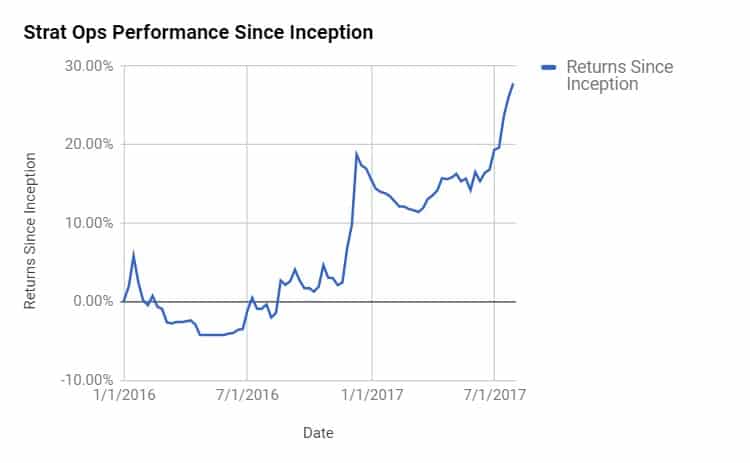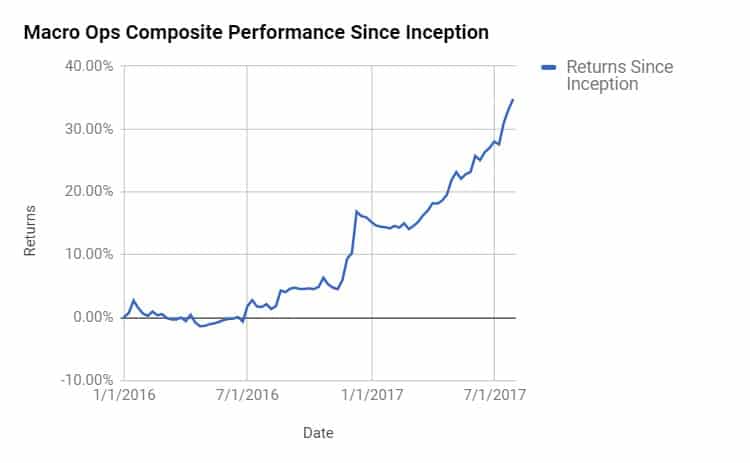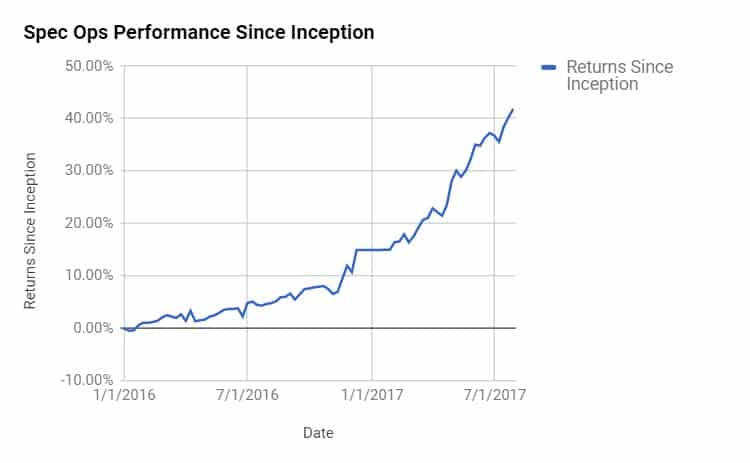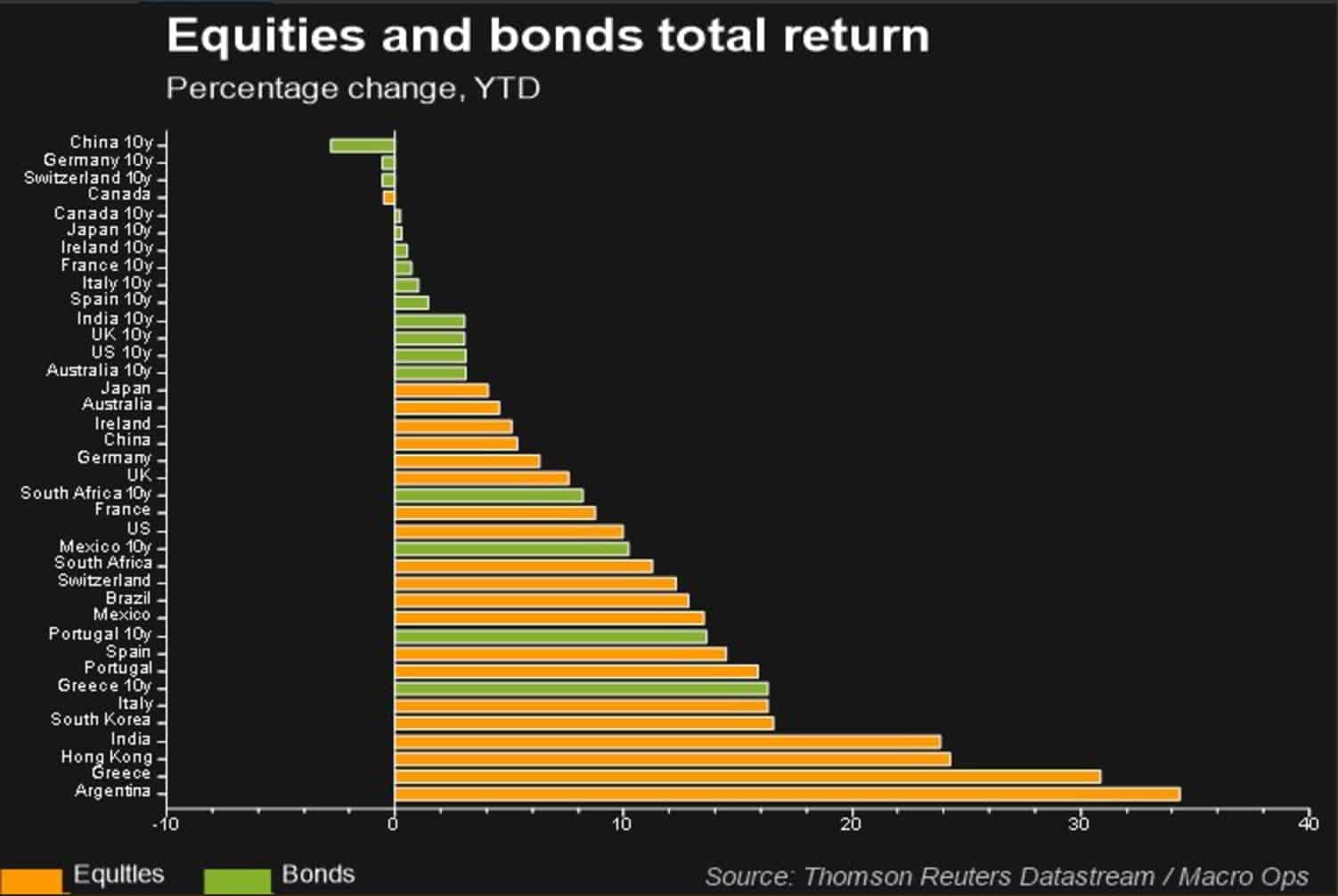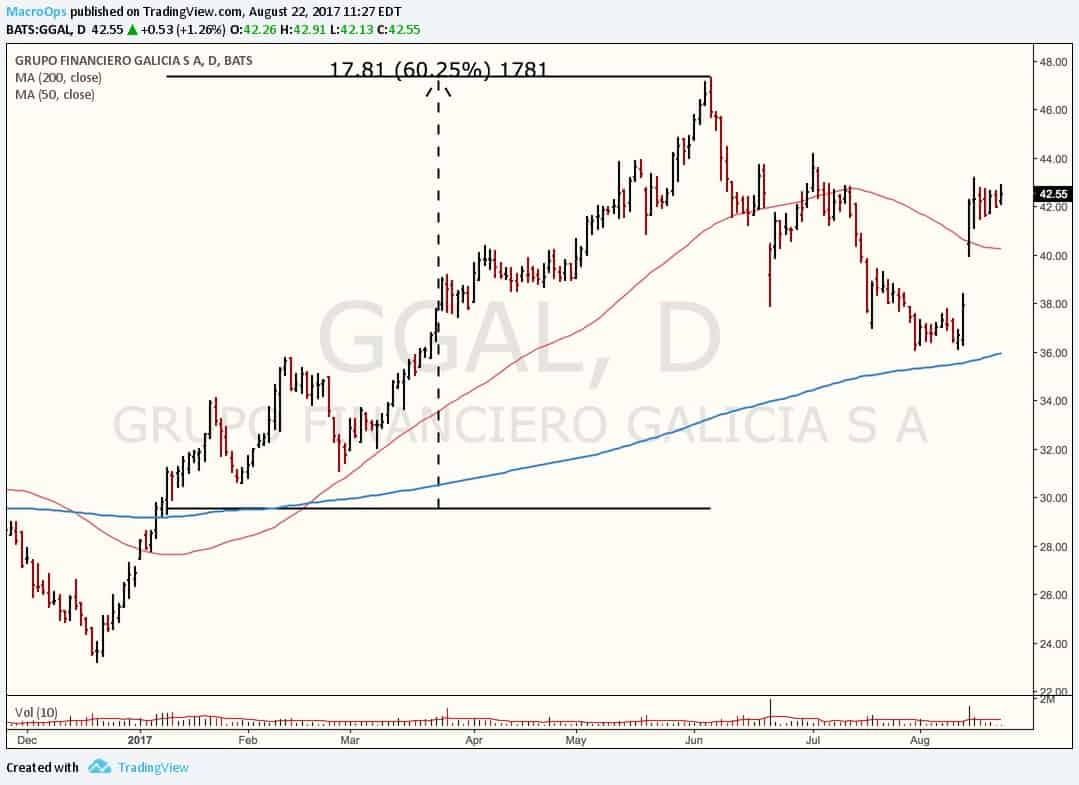To others, being wrong is a source of shame; to me, recognizing my mistakes is a source of pride. Once we realize that imperfect understanding is the human condition, there is no shame in being wrong, only in failing to correct our mistakes. ~ George Soros
I learned that everyone makes mistakes and has weaknesses and that one of the most important things that differentiates people is their approach to handling them. I learned that there is an incredible beauty to mistakes, because embedded in each mistake is a puzzle, and a gem that I could get if I solved it, i.e. a principle that I could use to reduce my mistakes in the future. ~ Ray Dalio
Alex here.
Every two quarters the Macro Ops team spends a week poring over our last six months of trading. We comb through our winners, losers, and the trades we almost pulled the trigger on, but didn’t take.
We keep detailed records of our reasoning for taking trades and our thoughts on the market at the time (running a newsletter helps). When reviewing, we compare those past notes to how things actually played out. Our goal is to see what we got right, what we got wrong, and where we completely screwed the pooch.
This is the most valuable exercise we do. Nothing pays us higher returns than taking a step back and ruthlessly dissecting our process and execution. I’ve learned more from studying my trading journal than I have from reading any trading book…
Like Dalio said, “embedded in each mistake is a puzzle, and a gem”.
The fantastic thing about being a trader is that you constantly make mistakes. And I mean CONSTANTLY… It’s basically our job to be wrong over and over and still make money.
The key is to have a robust process that lets you survive multiple errors. You’ve gotta have dry powder for when Lady Luck comes busting through your door to shove coinage down your pipe.
One of my favorite market technicians, Ned Davis, put it like this,
We are in the business of making mistakes. The only difference between the winners and the losers is that the winners make small mistakes, while the losers make big mistakes.
Well said, Ned.
We learn how to make these smaller mistakes by studying our bigger ones. That’s how we solve the puzzle and get to that gem of truth that’ll improve our process and kick our evolutionary flywheel up a gear.
It’s about practicing Josh Waitzkin’s concept of “making smaller and smaller circles”.
As he so rightly notes,
It’s rarely a mysterious technique that drives us to the top, but rather a profound mastery of what may well be a basic skill set.
After years in this game dissecting the greatest traders’ practices and habits, I can tell you… without a doubt… that there’s no secret sauce to anything they do.
It all comes down to the very basics:
- Protecting capital
- Letting winners run
- Keeping strong opinions weakly held
But of course doing it much better than the rest of us…
This is what I’ll be going over today — revisiting the first principles of trading and finding where I can make smaller circles.
In this review, we’re going to:
- Review our year-to-date (through July) and trailing-twelve-month (TTM) performance
- Discuss how and why we construct our portfolios the way we do
- Dive into our actual trades
- Go over our big winners and losers (focusing primarily on the losers)
- Talk about how our market expectations differed from the reality that unfolded
- Detail lessons learned and process changes we can make to reduce mistakes going forward
- Talk about where we are as a trading Collective and where we’re headed over the coming year
Now enough with the fluff… let’s get to the goods.
Performance
Below are the performance metrics for the Macro Ops (MO) Composite Portfolio, as well as a breakdown of the two separate portfolios that make it up.
Macro Ops Composite Portfolio
Return Metrics *Up to July 31st 2017
YTD: 16.90%
12-Month Return: 31.96%
Inception (Jan 1st, 2016): 34.78%
Annual Vol: 7.93%
Sharpe Ratio: 2.43
Max DD: -3.97%
Strategic Ops Portfolio
Return Metrics *Up to July 31st 2017
YTD: 10.50%
12-Month Return: 28.19%
Inception (Jan. 2016): 27.80%
Annual Vol: 10.85%
Sharpe Ratio: 1.29
Max DD: -9.50%
Spec Ops Portfolio
Return Metrics *Up To July 31st 2017
YTD: 23.41%
12-Month Return: 35.58%
Inception (Jan 1st, 2016): 41.84%
Annual Vol: 7.50%
Sharpe Ratio: 3.00
Max DD: -1.92%
The YTD return for the Macro Ops Composite Portfolio is 16.9%. The trailing twelve month return is 31.96%.
We evaluate ourselves on an absolute basis and don’t compete against any particular index. But for comparison, the S&P over the same timeframe returned 8.5% and 11.3%.
By any objective measure, these are great returns. When adjusted for risk, they’re exceptional.
These returns were the result of a handful of lucky breaks throughout the year, which we are able to capitalize on by diligently applying our framework day in and day out.
Our long term returns will always directly reflect our ability to execute our process.
It has nothing to do with our brilliance or occasional moments of genius. (We lack the former and are only occasionally deluded by the latter.)
With that said, let me explain why we breakdown our portfolios the way we do…
Portfolio Construction
The MO composite portfolio is comprised of two sub-portfolios — Strat Ops and Spec Ops. The goal is for these two strategies to complement each other in a barbell approach, balancing each other’s return streams.
Strat Ops is our macro focused long/short strategy that I (Alex) manage. This strategy has returned 10.5% YTD and 29.19% on a TTM basis.
Strat Ops focuses on placing highly asymmetric bets on market mispricings, which occur due to the market’s misinterpretation of the macro and micro, and/or sentiment or narrative driven dislocations.
These trades have a low win rate but a high return potential; meaning they have a high expected value (EV) as determined by our framework.
The goal of Strat Ops is to capitalize on the natural 90/10 return distribution of markets. It aims to let Pareto’s Law do its work while maximizing positive compounding.
The key to this strategy is taking small losses while letting winners run. To read more on how power laws drive market returns, you can check out this article I wrote on the subject here.
This strategy, like most profitable strategies, is difficult to execute. Not so much in theory, but definitely in practice. This isn’t due to any complexity inherent to the strategy itself — our framework is simple — but more so because proper execution requires fighting against your natural human tendencies.
For example, because of the 90/10 distribution of our returns (ie, 90% of our trades essentially scratch while 10% or fewer make our nut for the year) we often go long periods of time running hard, yet standing still.
This is not fun.
It requires patience and confidence in your process to succeed.
It’s human nature to want to press during dull markets (ie, up your sizing and frequency of trading) to produce returns now. But giving into this instinct is a losing proposition.
Mr. Market is the one who decides when to pay you. You don’t have a say. You just gotta make sure you’re ready to take the money when he offers.
If you try to force it, the market will pick you clean. There’s no squeezing blood from this stone.
The long-term win rate on Strat Ops trades is 41%. Over the last six months, it’s averaged only 31%.
This means only 1 out of every 3 trades has paid us over the last six months.
This low win rate is a feature, not a bug.
It’s low because we’re quick to take losses. Our average loss is 21bps (21bps = 0.21% of total capital).
We make money because our winners are much larger than our losers. Over the last year our average winning trade was roughly 7X the average loser.
Because Strat’s returns are bunchy, and it can go long periods without much trading activity, we run Spec Ops to balance our returns.
While Strat’s returns follow power laws, Spec’s are smooth and consistent.
Spec is run by Operator Tyler. I’ll let him give you the details on it in part 2 of our mid-year review… but in short, it’s primary aim is to generate positive carry by harvesting volatility premium. We then increase and reduce its leverage in accordance with our macro framework.
Deploying Spec Ops not only smoothes our returns, but helps reduce the feeling of having to chase the market in Strat when we don’t see any compelling trades. It serves as a superior alternative to running an asset allocation system and clipping beta coupons.
The last 18-months have been one of the best macro environments to run Spec’s strategy. As a result, we’ve been aggressive in sizing our risk there. As we transition into a higher volatility regime — which we believe we are doing now — we’ll begin throttling back our short vol trading in order to trade the long side more.
Now let’s move on to the good stuff: my mistakes, failures, and embarrassing trading blunders.
Strat Ops Review
Here’s a quick breakdown of the trading I’ve done over the last six months:
We’ve executed roughly 50 trades since the start of the year. But this number includes pyramiding and trading around positions, so the actual number of independent trades is closer to 30.
30 is higher than where I want to be. My sweet spot for trading is in the 2-4 trades per month range (that’s counting entries and exits as a single trade). So that’s about 14-28 trades max over 7 months.
Here’s my YTD profit and loss breakdown per asset class:
Equity P&L = -1.5%
FX P&L = 6.9%
Fixed Income = 5.5%
Options = -0.4%
True to Pareto’s law, the vast majority of our profits have come from just three trades in forex and bonds, while stocks have been a scratch.
This is one of the many reasons a global macro approach beats a traditional stock-only approach.
You never know where you’ll get paid. Being unconstrained and placing convex bets in various markets lets you go to where the big moves are happening.
Last year we made all our money in stocks, while getting chopped up in dollar trades. This year we made our nut shorting the dollar against the loonie and aussie, along with trading in and out of bond futures.
The current macro environment has been a much easier read for me than last years.
Last year I constantly felt I was on the wrong side of the market. I was slow to change my read on the Fed and then let a number of biases and preconceived notions cloud my objective assessment of the data. We still had a good year, but it was a battle.
My main takeaway from last year’s review was to strip away my ideologies and biases surrounding the market, so I could remain more flexible in my analysis. You can read about this in our 2016 review here.
This has taken a lot of work, but has been extremely beneficial in helping me stay on the right side of things. Don’t get me wrong, I’ve screwed up plenty over the last six months (which we’ll talk about soon) but overall I’ve gotten the big things right, or at least have been quick to admit when I was wrong so that I didn’t stay wrong for long…
Our broad macro calls were good. At the start of the year our primary macro theme was that the US bull market would continue and even pick up steam.
We also thought the global reflation trade, driven by Chinese liquidity and rebounding global sentiment, would pick up and drive Europe and emerging markets higher.
We were quick to capitalize on the long European equities trade, with the Portuguese ETF (PGAL) still being one of our larger positions.
And we were all over the China rebound by opening a large position in Chinese A-shares (ASHR).
But even though I’m much happier with our responsiveness to the macro, my execution was somewhere between piss-poor and mediocre.
Here’s why…
Every six months I like check which markets have performed the best. I then ask myself, why didn’t I buy the top performing markets? I go back and review my writing on the subject to see what I got wrong and maybe tease out a lesson I can carry forward.
This chart is in local currency terms. The top five performing markets this year were:
- Argentina
- Greece
- India
- South Korea
- Italy
Here’s where I really screwed up this year. I was bullish on all five of these markets since the start of the year. But for some reason, I only had exposure to India! And it was through a single equity play in an Indian cable company (VDTH) that did absolutely nothing…
The worst part is that I’ve been very bullish on Argentina for the last year. I’ve researched a bunch of their companies and my equity target list has been full of great Argentinian stocks.
But even after all this research, I just sat here on the sidelines watching these great stocks go higher and higher!
For some inexplicable reason, I’ve been trigger shy. I don’t for the life of me know why. It’s something I’m pondering and trying to get to the bottom of.
It gets even worse because I actually did have exposure to Argentina at the beginning of the year. It was through a large position in an Argentinian bank (GGAL).
But for a some stupid reason I sold out for a small profit after only holding it for a few weeks. Since then it’s shot up as high as 60% and is now up around 45% from our original entry.
So stupid…
And then there’s Greece. I was tracking Greece well before it broke out of its textbook technical base. I wrote about it a number of times and it fit perfectly with our European reflation theme.
I didn’t put it on the books because we had a large position in Portugal (PGAL). I viewed them as the same trade, which they mostly are, but it was a mistake not adding exposure and pushing the theme.
And this gets to the crux of my poor execution this year. I was right on most of the macro thematics, but I was horribly underexposed.
I should have pulled the trigger on the Argentinian plays as well as increased and diversified my Indian market exposure.
When I start up Hindsight Capital I’m gonna make a killing…
Failing to execute and size up on solid macro themes was my biggest failure this year.
To fix this, I need to further streamline my trade tracking process. I have a habit of following so many different markets and vehicles, that I lose sight of what I’m most bullish on.
I’ll never catch all the big moves, but there’s no excuse in missing one when I’m correctly bullish on the macro, technicals, and sentiment surrounding it. That’s just ridiculous.
Going forward I’ll be refining my tracking process while also keep a running list of the five most interesting trades/themes/markets. I’ll update this list each and every week and share it with members of the Collective.
This will force me to stay on top of things. If I fail to pull the trigger on a great trade like Argentina again, I’ll be forced to explain why I’m being such a limp dick to the Operator Collective.
Another area of weakness I’ve noticed is my sloppy entries and being too slow to move my stops to breakeven.
This has been a big problem in equities. A good example is Trivago, which demonstrates both these areas of nastiness perfectly.
There’s so many things that are wrong with this trade.
First, I was bullish on this stock earlier in the year and watched it climb from $11 to $14 and then $18… but I didn’t pull the trigger.
It wasn’t until the stock gapped up to $20 that FOMO took over. I chased and ended up getting a shit entry.
The stock quickly sunk, but then recovered and climbed over 20% from our entry price over the following two months.
I never liked the tape though. It seemed heavy to me and I wanted to move stops up but didn’t. Looking back, it was a matter of being too busy and getting sidetracked.
The breakdown from the consolidation near the highs, on July 31st, offered a perfect opportunity to take profits and run. But I didn’t.
Instead, I let the trade round trip and knock out our initial stop for a 45bps loss. Not the end of the world, but not stellar trading either.
Similar trade management errors can be seen elsewhere in my trading log — almost entirely centered in equities for some reason.
These small errors ate away our overall stock performance, which would be up a few hundred basis points if not for poor management. We’ve actually held a fairly strong equity book in things like GAIA, HDSN, PGAL, ASHR, and IPI. But unnecessary errors on my part overshadowed the good performers in our book.
My takeaway here is to be more disciplined in my entries and tighten my trade management.
I need to stop chasing moves and instead wait for proper price action to give me a strong inflection point to enter. I’ve been doing this in my FX and fixed income trading, but for some reason I’ve let my stock management slip.
I also need to work on further quantifying my trade management method. I’ve long been a ‘feel’ trader, which works well in most aspects of my game, but I could benefit from applying harder quantitative rules to areas like moving stops to breakeven.
Peter Brandt has done a lot of work on the subject and is the best I know at trade management. I’m going to see what I can take from him and incorporate into my own style.
A Final Word…
Overall, it’s been a decent run this year.
I don’t know about you guys, but I never feel my trading is particularly sexy. It always feels like I spend my time battling in the muddy trenches, constantly tripping over myself and fucking up, but then somehow, through the grace of the gods, I come out ahead and beat the market.
That’s how it’s always been for me. Is that how it is for you?
I’ve always wanted to sit down with Druck and Tepper and pore over their trade logs and ask them if they feel the same way I do battling markets.
They probably don’t. It’s probably just me…
They probably float around calmly, executing prescient trades that compound the shit out of their money.
Oh well, I’ve never been known for my style points in anything I’ve done. But I’m a competitive bastard and do have a knack for winning, even though it’s hardly ever pretty.
This brings me to the last thing I want to talk about: the MO Collective, our trading journey, and of course you guys.
Macro Ops is now 18-months old. It’s a young operation. We’ve come a long way since we started, but we still have a long ways to go.
The community we’ve built is awesome. I think we have the best Collective of hard-charging, maniacally obsessed traders anywhere in the world. And I love how global we are. We now have members on every major continent. That’s a lot of eyes scouring markets and feeding intel and trade ideas into the group.
I want to give a big thanks to those of you who’ve joined us. Thank you for supporting us and bringing value to the community. I hope we give you plenty of value in return and I promise it’ll only increase going forward.
Our mission statement today is the same as when we started.
- Build the best community of likeminded traders from around the world
- Continuously study markets and trade theory and pass this knowledge to the group
- Create a flywheel of growth where we teach members, they teach us, and on and on
- Use the expanse of the Collective to scour the globe for trades and make lots of money
Our primary directive going forward is to further refine and breakdown our global macro approach in a way that can then easily be shared with the group.
We want to make a much bigger push in creating short video courses on all things trade theory and markets related.
I plan on doing more live videos in our Comm Center. The plan is to let you guys essentially look over my shoulder while I study markets and dig into potential trades. So expect more webinars, more Google Hangouts, and more training material in general.
A long-term goal of ours, which we hope to start building next year, is a platform where we can directly share our data and various market models with you guys. Essentially, Macro Ops has always been about the three of us (Tyler, AK, and I) building the trading site that we always wanted but didn’t exist.
The plan is to build a platform that shares the unique data we have access to, along with our models for analyzing markets, so the Collective can use these tools and share their resultant ideas and insights with one another. And hopefully we all make a ton of money together as a result.
It’s a long road from here to there, and we’ve got our work cut out for us, but I’m more determined than ever to get us there.
There’s a few reasons for this.
The big one being that after a long and tough struggle with illness, my health is finally coming back.
I’ve talked to a few of you about this and I won’t bore everybody with details here. I may write a longer piece on the subject down the road, but essentially a few years ago I was lucky enough to catch one of those rare unknown diseases that typically kills their hosts while I was doing some climbing in the Himalayas.
Over the last few years it’s been a rolling struggle where at times I’d lose my motor skills, my speech would become slurred (if you’ve heard me on video and I sounded drunk that’s why), and I’d operate at less than 50% of physical and mental capacity.
It’s been a bitch of a fight but also a major blessing in disguise, as all great struggles are.
With little help from the US medical establishment (mostly a lot of study of my own, I’m probably a leading expert on the disease by now) I’ve turned a corner and I’m close to getting back to 100%.
I can’t tell you how blessed and excited I am… this is going to allow me study the trading game 100x harder than I’ve been able to the last few years ;).
I owe Tyler and AK a huge debt of gratitude because they’ve basically carried MO since inception and put up with the big pain in the ass I could be while going through treatment.
Anyways, this coming year is going to be an exciting one.
I recently moved out to a secluded cabin in the mountains of Virginia. I’m really out there. I get no cable, trash collection, or mail, and have to drive 30 minutes into the nearest small town. It’s awesome.
I moved here because my new wife is deploying for a year and I wanted to get away so I could solely focus on markets and MO 24/7 without any distraction.
I also probably read too much Thoreau and Emerson when I was younger. And there’s always been that story that Jesse Livermore tells about the mysterious trader who lived in the California mountains and killed it in markets, but I digress…
I have a long-term 20-30 year goal. It’s to be one of the best traders alive.
I realize that’s a ridiculous thing to say. I know… but I mean it. I mean it with every fiber of my being. And it almost doesn’t matter if I ever get there. It’s more about the process and struggle that’s inherent to the journey that excites me and gets me out of bed in the morning.
You see, I love this game. I mean I ABSOLUTELY love it. It has nothing to do with the money, the status, or any of that BS. I just love the game itself. The constant and incredible challenge of it. It’s the greatest game in the world in my eyes.
I get to study history, evolutionary biology, mathematics, probability theory, human psychology, dissect great businesses… all of this great stuff, because it all feeds into getting better at the game!
For somebody like myself, who is infinitely curious about everything and not to mention extremely competitive… you can see why I love the game so much.
So I don’t care if my long term goal reads as ridiculous. That’s besides the point. It doesn’t matter.
My whole life I’ve dreamt up extremely difficult, seemingly out of reach goals, and then went on to accomplish them. And there’s not a single ounce of doubt in me that I won’t do the exact same thing here.
Tyler and AK are the same way. That’s how we connected in the first place and why we started MO.
Big thanks to everybody for reading. I hope you got something out of it!
I don’t care if you’re a member or just enjoy the free content we put out. It’s a big honor and extremely humbling to have you read our work and we love all the feedback you guys give us.
I’ll leave you with some wise words from the smiling fat man.
There are two mistakes one can make along the road to truth… not going all the way, and not starting. ~ Siddhartha Gautama (Buddha)

